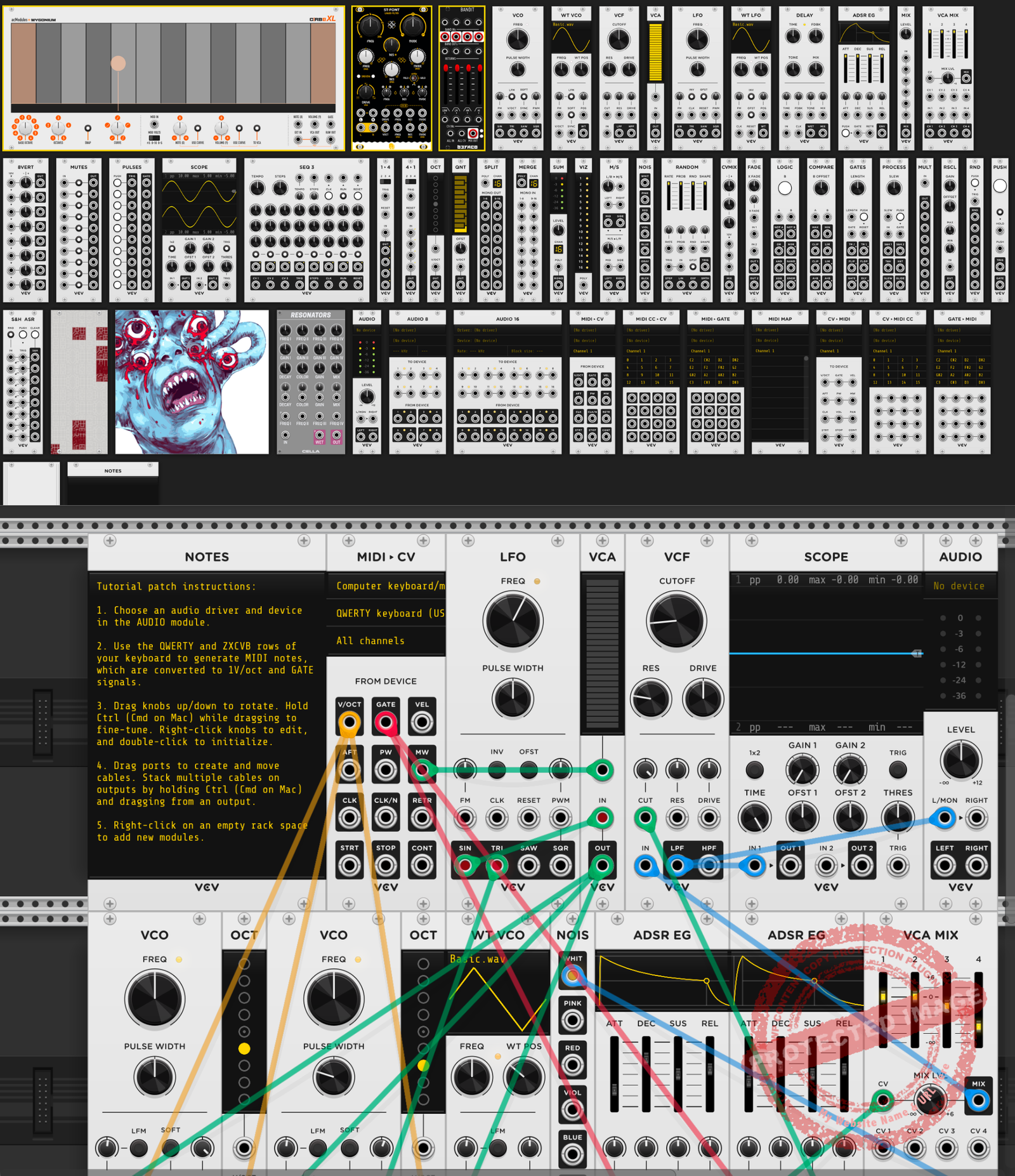Softube Modular vs VCV Rack 2. Let’s compare two cost-effective software-based alternatives to hardware modular synths.
I’m so excited you stopped by because we’re about to geek out on one of my favorite topics: modular synthesizers! Don’t worry, though; I’m not about to tell you to drop your life savings on a giant modular rack (though I might be tempted). Instead, we’ll be comparing two much more wallet-friendly software options, Softube Modular, and VCV Rack, and figuring out which one might be your new go-to for creative sound design.
Now, modular synths can sometimes feel like building a rocket in your garage, with lots of patch cables, blinking lights, and a million ways to do things. But that’s half the fun! Think of these programs like video game versions of hardware modules, no real soldering, no freaked-out roommate wondering where all these cables came from, and definitely less damage to the bank account.
So, we’ll look at the features, costs, pros, and cons of each software so you can decide which vibe suits you best. By the end of this journey, you’ll be well on your way to building those mind-bending patches with minimal stress and maybe even some extra cash in your wallet for that next gear obsession. Let’s dive in!
Features: Softube Modular vs VCV Rack
| Feature | Softube Modular | VCV Rack |
| Standalone-Plugin | No standalone mode Instrument & FX plugin variants | Rack 2 Pro: Standalone + Plugin
Rack 2 Free: Standalone only |
| Core Modules & Library | 50+ included modules (Doepfer + other utilities)
Expandable with additional official modules |
30+ built-in modules
Over 1,800 free third-party modules 300+ premium modules |
| Sound Generation & Processing | Modeled Doepfer A-100 modules (VCO, VCF, VCA, etc.)
Softube FX modules (TSAR-1, Heartbeat) Integrates with DAW audio/MIDI |
Fundamental modules (VCO, VCF, VCA, etc.)
Polyphonic patch cables Premium expansions (e.g., VCV Drums, Sound Stage) |
| DAW Integration & Control | Runs in major DAWs (VST, AU, AAX)
Performance modules for custom macro controls Full NKS compatibility; no standalone option |
VCV Rack Pro runs as a VST plugin
MIDI to CV, audio modules for flexible routing Right-click menus for advanced settings |
| Interface & Usability | Fixed window-size approach can feel restrictive
Click-and-drag cable patching Extensive preset library with tagging |
Resizable interface (standalone)
Updated module browser for quick search Deeper functions via right-click menu |
| Highlighted Features | Officially licensed modules (Buchla, Mutable, Intellijel, etc.)
Insert as instrument or effect in DAW DAW automation for all parameters |
Massive 3rd-party module ecosystem
Polyphony & advanced patching Potential expansions (VCV Drums, Sound Stage) Plugin mode |
| Ideal For | Eurorack fans seeking near-1:1 hardware simulation
Plugin users craving integrated DAW workflow Sound designers after top-notch emulations |
Users wanting a huge, open-source ecosystem
People who need DAW plugin support (Pro) Anyone curious to try modular for free |
Sound and Character: Softube Modular vs VCV Rack
In terms of sound and character, these two software take pretty different ways.
- Emulative Warmth vs. Digital Crispness
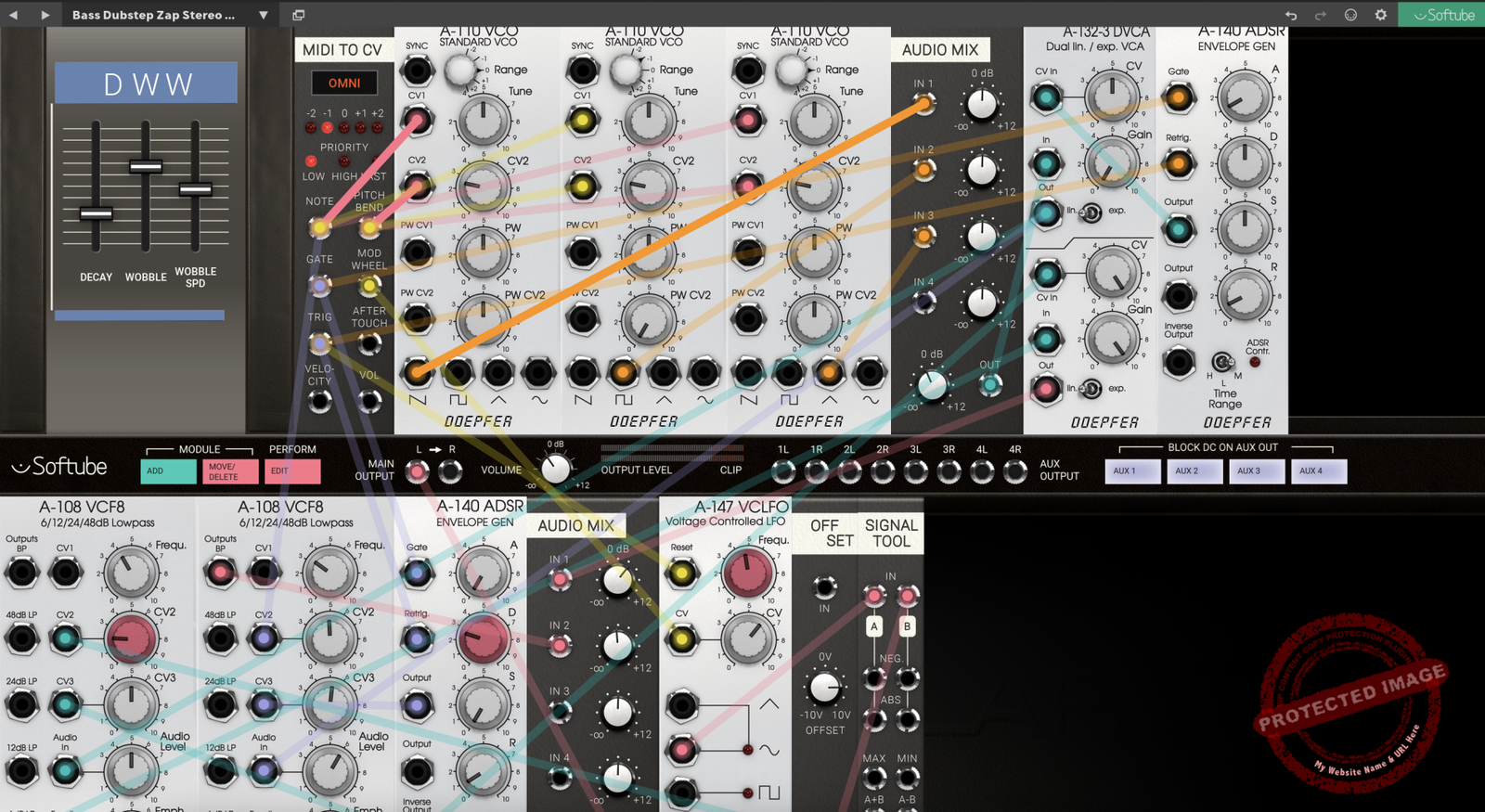
When comparing VCV Rack 2 Pro and Softube Modular, one of the most noticeable differences lies in their approach to sound generation. Softube has partnered with well-known hardware brands such as Buchla, Mutable Instruments, and Doepfer, in order to recreate the musicality and subtle imperfections of actual Eurorack modules.
This gives Softube Modular a recognizable “analog-esque” warmth, great for those who love a classic, slightly colored vibe.
Meanwhile, VCV Rack 2 Pro, with its open-source roots, leans more toward a detailed, “digital crispness,” providing pristine audio that many users appreciate for clean, evolving, and highly experimental patches.
Both platforms can stretch into one another’s territories, as Softube can certainly sound high-fidelity, and VCV Rack can dial in some analog grit. But the default character each brings to the table sets them slightly apart.
- Module Variety and Tonal Range
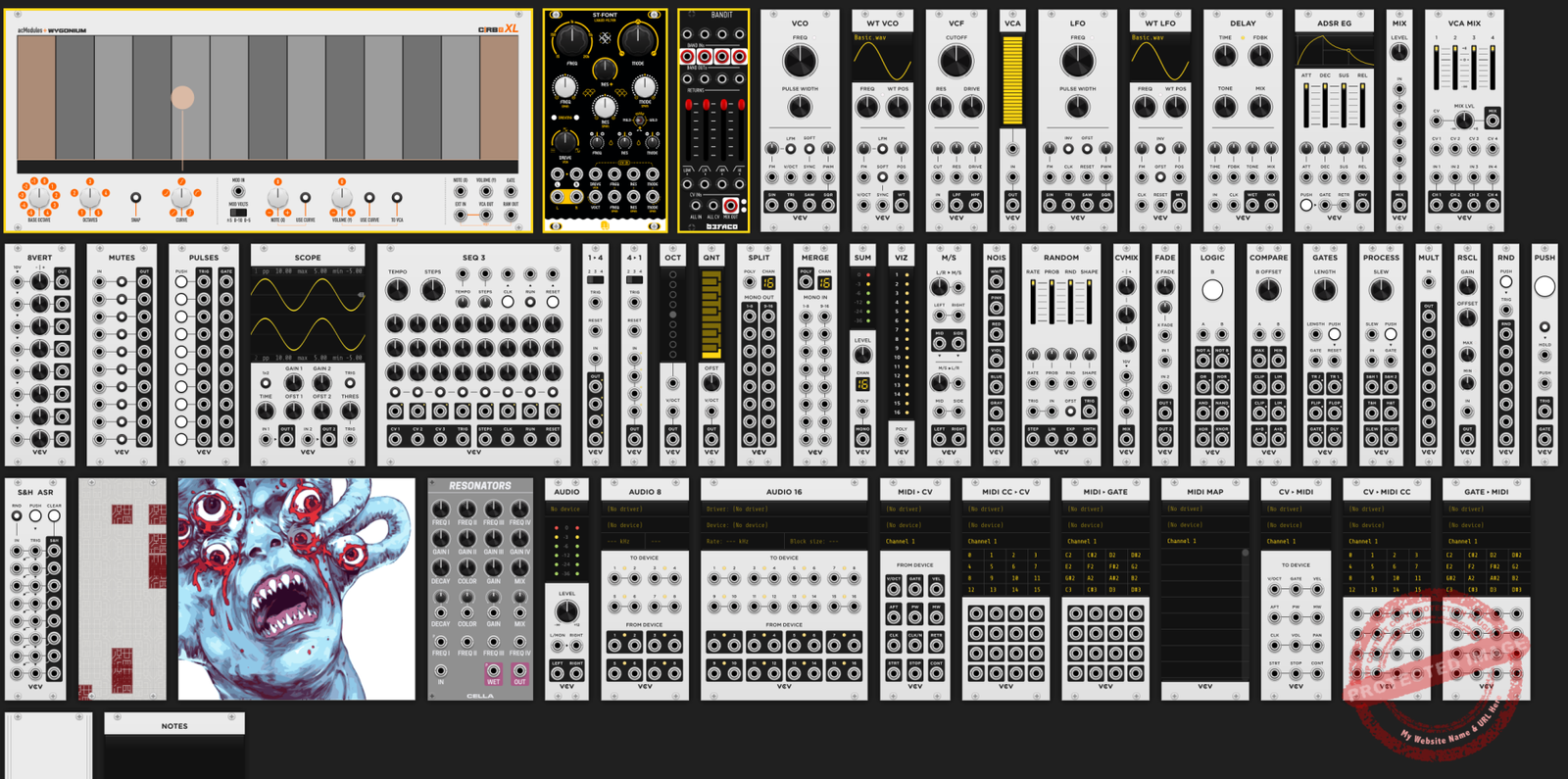
In terms of sonic palette, VCV Rack boasts a massive ecosystem of over 1,800 free modules plus hundreds of premium options. This can translate into nearly limitless tones.
Want to sculpt harsh noise, shimmering pads, or generative textures that change over time? There’s a module for that. It’s a creator’s paradise where you can pair weird wave folder clones with complex sequencers at zero extra cost (if you stick to the free offerings).
Softube Modular, on the other hand, offers fewer total modules, but each is finely tuned and emulates existing hardware more faithfully. Whether you’re exploring Buchla bongo hits or layering Intellijel’s crisp oscillator tones, there’s a distinctive authenticity in Softube’s models that some say is closer to real-world Eurorack gear.
Both systems will cover classic subtractive synthesis, ambient drones, glitchy effects, and more; the difference is in how you assemble and tweak your virtual rack.
- Workflow and Extended Sound Sculpting
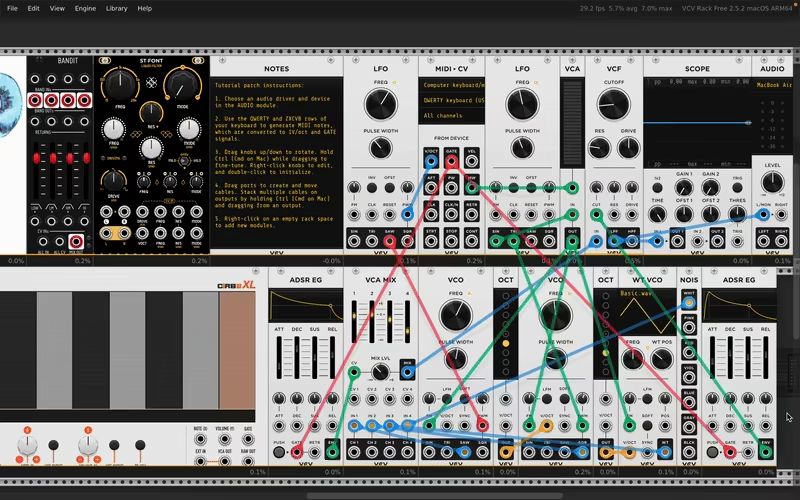
Because of its direct integration with well-known hardware-inspired modules, Softube Modular provides a streamlined way to capture that familiar analog-era sound.
If you’re chasing traditional Eurorack patches, it can feel more like interacting with a physical rack, especially if you take advantage of Softube’s performance modules for quick macro control.
With VCV Rack 2 Pro, the endless supply of third-party modules means you can craft highly unconventional signal paths and layered polyphonic patches that push well beyond typical analog boundaries. VCV’s polyphonic support, in particular, opens doors to lush chords and advanced stereo or surround experiments, granting you a unique angle on modern sound design.
Ultimately, both platforms deliver impressive sonic depth. If you crave faithful analog-style modules that “just work,” Softube might be your jam; if you relish infinite experimentation and digital precision, VCV Rack is tough to beat.
Features and Interface: Softube Modular vs VCV Rack
Well, I’ve spent quite a bit of time with both VCV Rack 2 Pro and Softube Modular, and there’s a real difference in how each one “feels” on the screen.
- VCV Rack 2
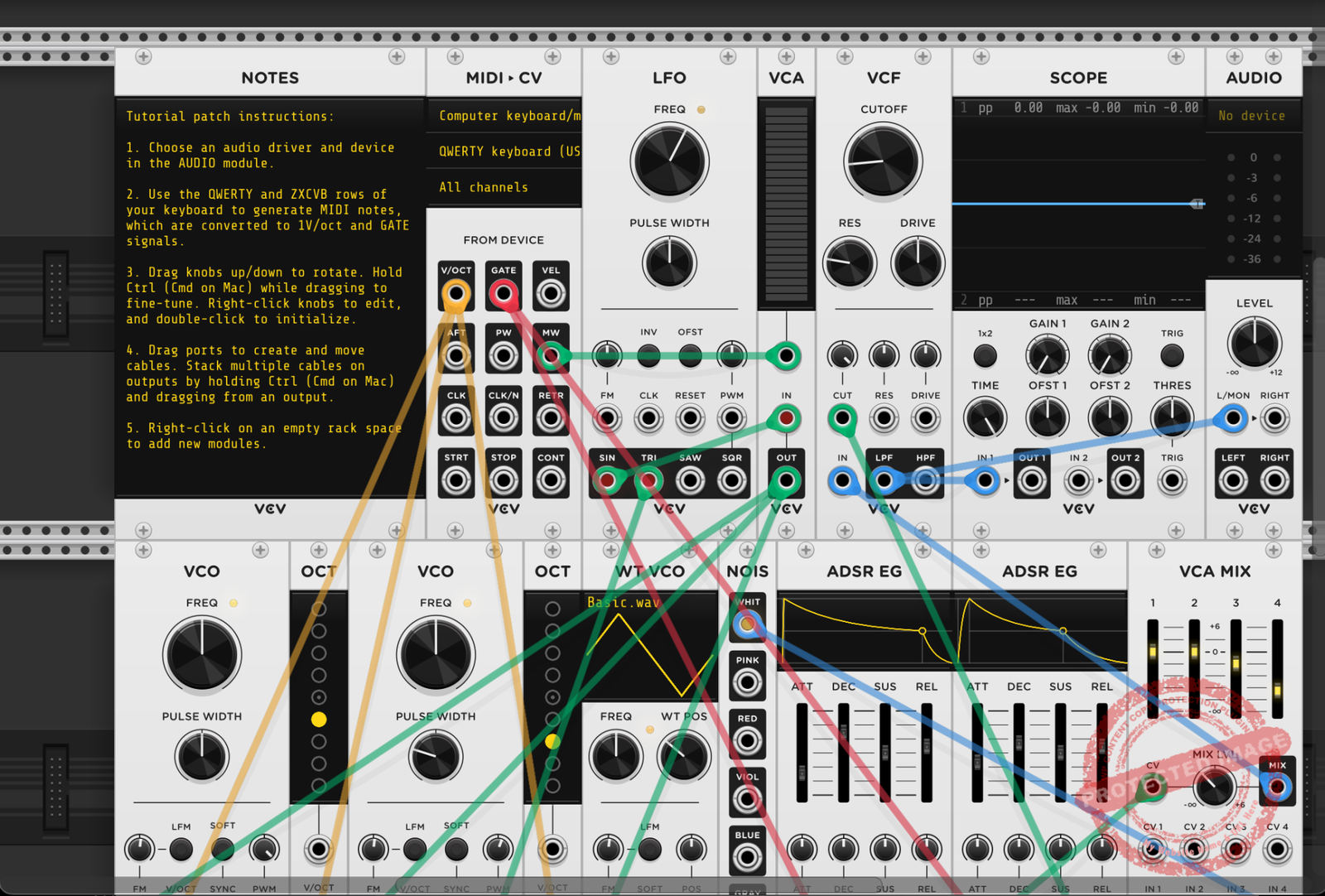
VCV Rack 2 has this great (and huge) module library that you can comb through in its updated browser. Just click, add, and go. It’s almost like scrolling through a never-ending music store shelf.
Plus, being able to resize the standalone window is a game-changer when you’re juggling multiple patches. I love that I can scale up everything on my big monitor or shrink it down on my laptop without losing the flow.
Another thing that sets them apart is how each handles features like preset management and performance controls. VCV Rack 2 Pro has a slick interface for browsing modules and presets, making it easy to keep track of all those wild third-party add-ons you might install.
- Softube Modular
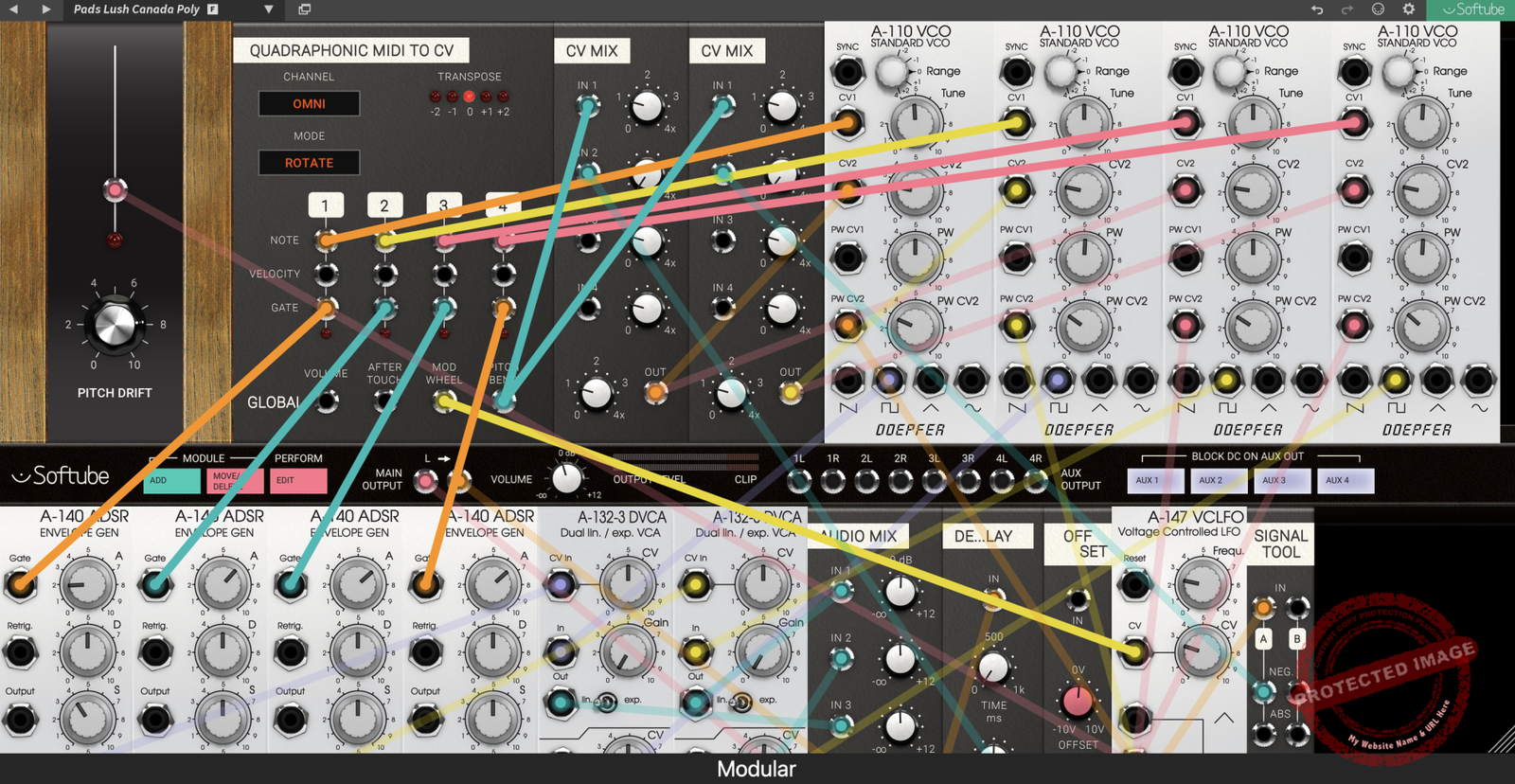
Meanwhile, Softube Modular keeps things a bit more locked down in terms of window size and scroll space, so your workspace can feel a little cramped at first. But once you get used to it, the interface looks super-polished, almost like someone curated a boutique rack of high-end Eurorack gear for your DAW.
It might not give you as many freebies or expansions out of the gate, but it runs so smoothly. And let’s be real: it’s gorgeous. Those faithful reproductions of hardware modules immediately catch your eye, and you kind of feel like you’re playing with the real deal.
Also, Softube Modular comes with a large range of presets to get you started, which is great for those who are not familiar with modular synths.
Softube offers something called performance modules, which act like a custom control panel so you can tweak crucial parameters without digging through your entire patch. That can be a lifesaver when you’re trying to jam on the fly.
- Comparison
At the end of the day, both platforms offer intuitive ways to drag, drop, and wire up modules that just depends on whether you prefer VCV Rack’s “all-you-can-eat buffet” approach or Softube’s sleeker, more curated vibe.
Either way, they’ll both have you happily lost in a tangle of virtual cables for hours on end. I think Modular can be a better choice for more inexperienced users, while VCV Rack 2 is more for experienced user to find their way in.
Performance: Softube Modular vs VCV Rack
I’ve always been a sucker for creating massive, experimental patches, so performance is a big deal for me.
- VCV Rack 2
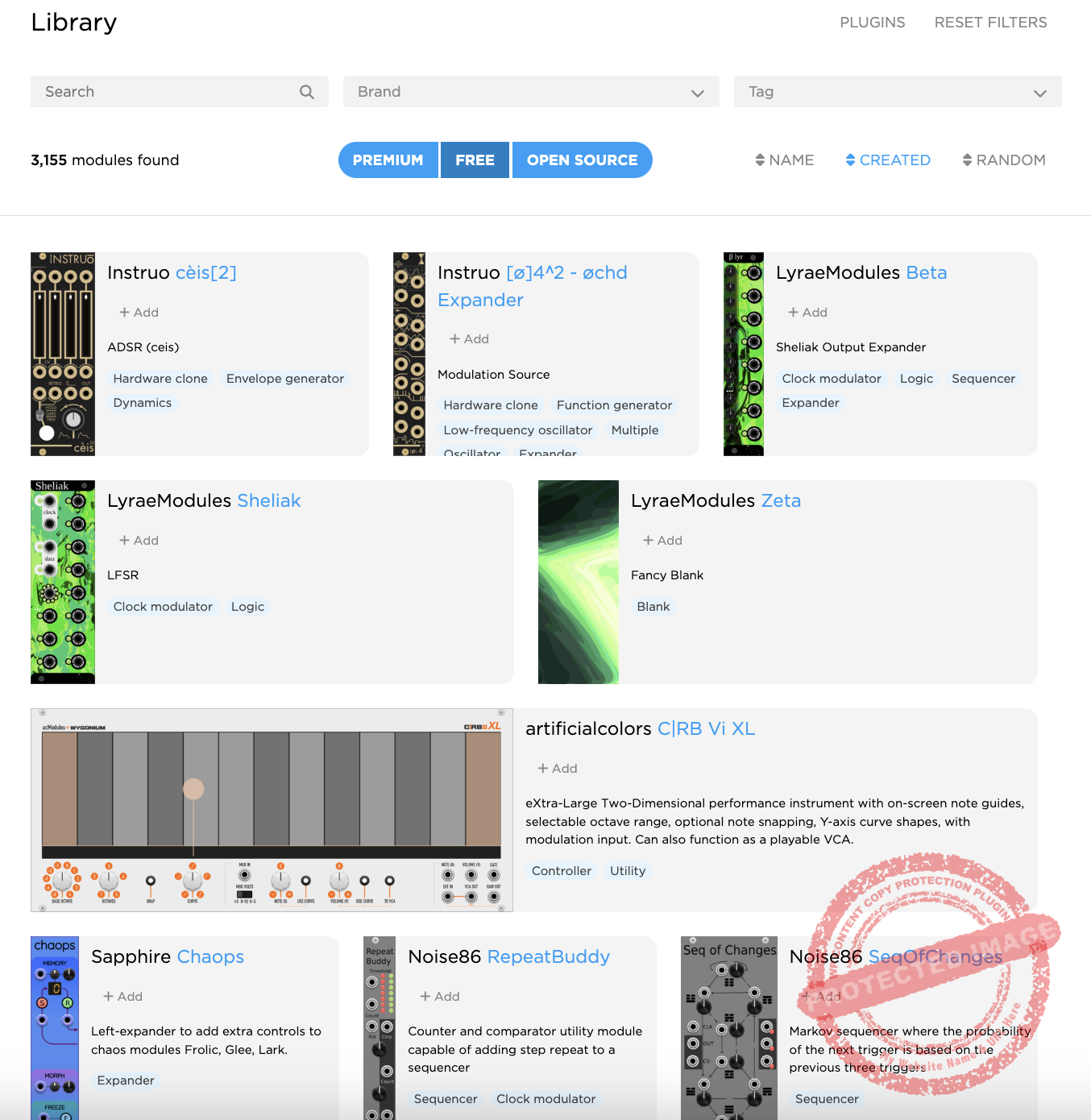
One thing I’ve noticed is that VCV Rack 2 Pro can gobble up a decent chunk of CPU when you start stacking dozens of modules, especially the more complex third-party ones.
But the trade-off is that it rarely stutters or crashes on a modern setup, and if you’re using it in standalone mode, you can tweak the interface size to see as many modules as you can handle without straining your eyes.
Once you jump into plugin mode, things stay pretty smooth, but you might need to watch your CPU meter if you’re layering multiple plugin instances in a demanding DAW project.
- Softube Modular
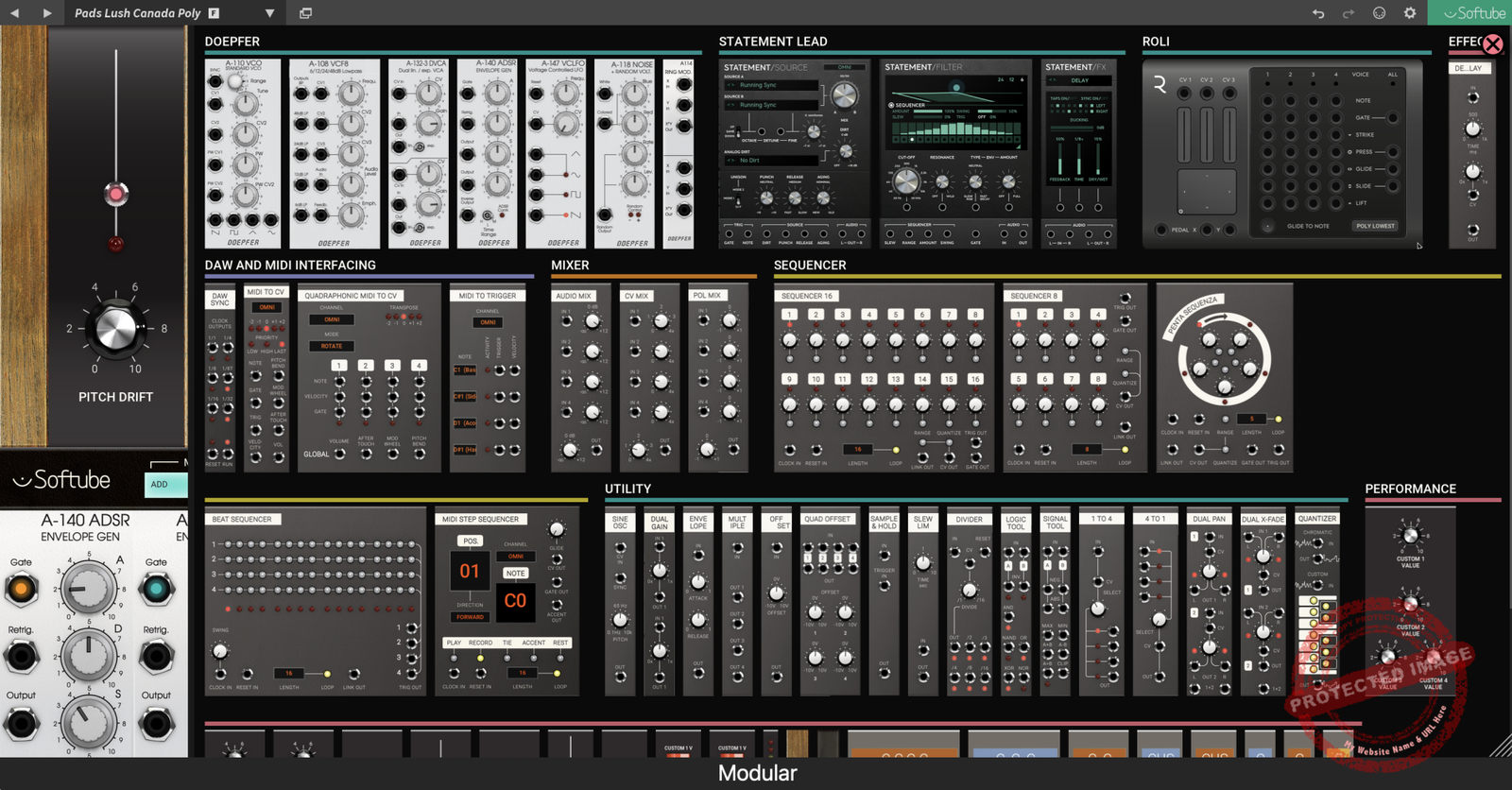
Softube Modular, on the other hand, feels a bit more optimized within a DAW environment right out of the gate. It’s not that you can’t drive your CPU into the red if you load tons of modules and try to run everything at the lowest buffer size. Trust me, you can, but it tends to feel a bit more predictable overall.
The real advantage is how seamlessly it integrates with whatever host you’re using, which cuts down on potential workflow hiccups.
That said, Softube doesn’t give you a standalone option, so you’re pretty much tied to opening it inside your DAW or not at all.
Still, both platforms deliver solid performance that lets you explore wild patches without too many technical headaches. Just be prepared to feed them a decent CPU if you’re going to go crazy with modules.
In Practice: Softube Modular vs VCV Rack
No matter if you’re a dedicated live performer, a studio wizard, or a curious newcomer, both VCV Rack 2 Pro and Softube Modular can be molded to suit your workflow.
- Live Performance
If you’re someone who loves jamming on the fly, both VCV Rack 2 Pro and Softube Modular can be great performance tools, although their approaches differ.
VCV Rack’s standalone mode is a huge plus here because you can run it without loading a DAW, making setup quick and performance-focused. Add a MIDI controller or two, and you can improvise patch changes and parameter tweaks in real time.
Softube Modular, meanwhile, integrates neatly into a DAW like Ableton or Bitwig for live sets. This can be great if you’re already using software instruments and effects in your workflow, but it means there’s no standalone option if you want to minimize overhead or focus purely on modular.
- Studio Sound Design
When it’s time for deep experimentation and layering complex sounds in the studio, both platforms excel, just in different ways.
With VCV Rack 2 Pro, you have an endless supply of third-party modules, letting you sculpt everything from nuanced ambient pads to wacky, glitchy sequences.
Softube Modular might have fewer total modules, but they’re often pristine emulations of famous hardware, which can inspire a more classic Eurorack approach.
If you’re chasing that “authentic” vibe, like a Buchla or Mutable Instruments patch, Softube delivers. And because it’s a plug-in, first and foremost, bouncing down tracks or automating parameters in your DAW feels especially seamless.
- Education and Learning
If you’re a newcomer to modular synthesis, both platforms can act as invaluable teaching tools.
VCV Rack, with its massive (and mostly free) module library, encourages trial-and-error learning without the fear of breaking the bank. It can be a bit more overwhelming initially, and has a steeper learning curve compared to Modular, but after getting familiar with it, it is a decent platform to learn, in my opinion.
On the other hand, Softube’s curated, high-quality modules can offer a more focused and arguably more “realistic” learning environment, closely mirroring the hardware Eurorack. Also, I must say the interface and workflow are more straightforward than those of VCV Rack.
Either way, you’ll gain a deeper understanding of synthesis through hands-on experimentation, minus the expensive gear lust.
Conclusion
Deciding between VCV Rack 2 Pro and Softube Modular really comes down to personal preference and needs.
VCV Rack’s immense module library and standalone mode make it heaven for sound explorers who love flexibility and a huge range of free options.
Meanwhile, Softube Modular offers a polished, hardware-inspired approach that fits beautifully into any DAW and provides top-notch emulations of famous Eurorack modules.
Whichever path you choose, both systems can produce everything from classic, cozy synth tones to the most experimental sonic adventures. They each reduce the cost and chaos of hardware, letting you learn, jam, and create in a customizable virtual playground!


